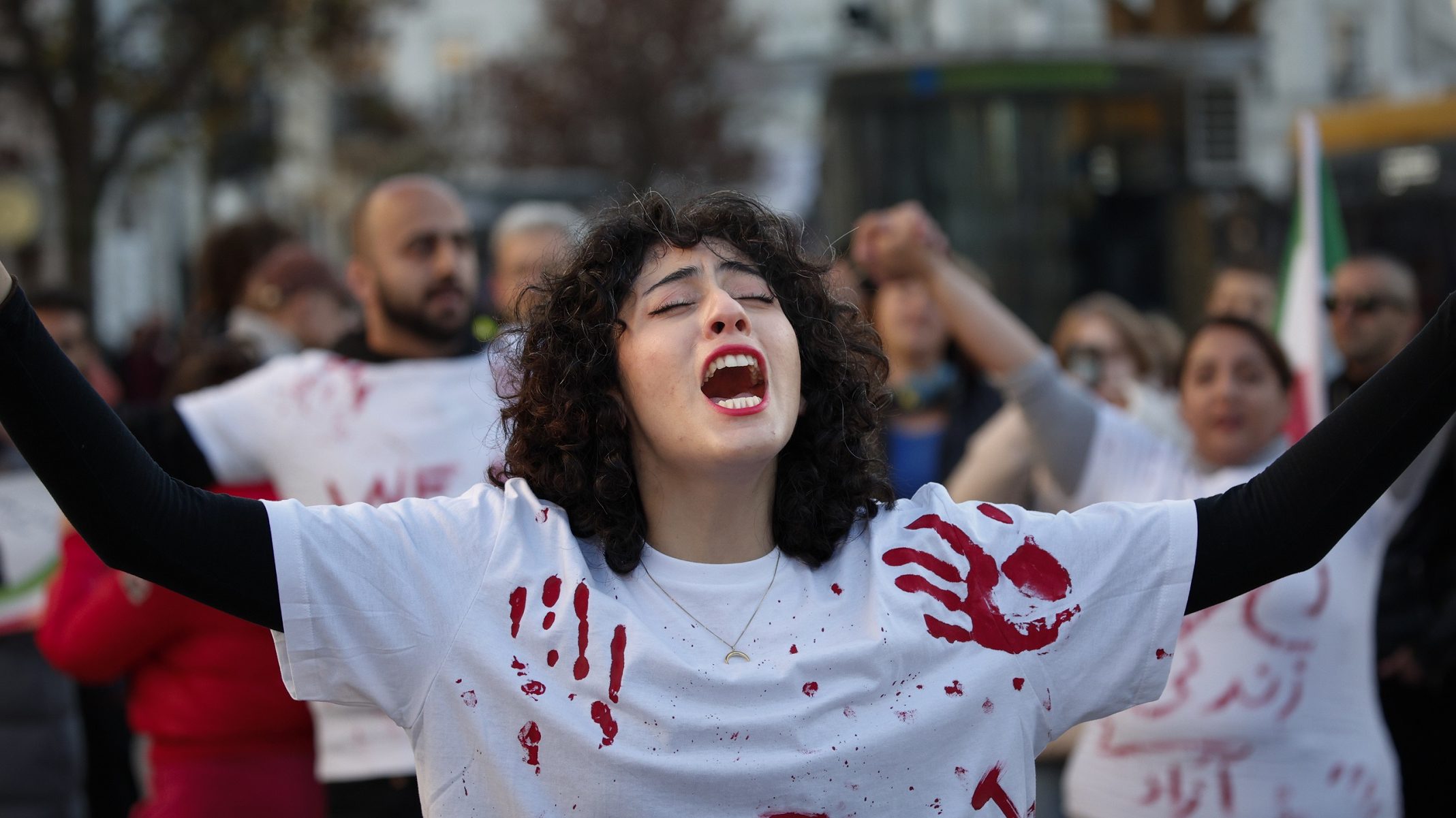‘Women, Life, Freedom’: Activist Urges World Not To Give Up on Iran
Against odds, protests after death of Mahsa Amini surge past eighth week
To hear an in-depth discussion in Spanish on the protests in Iran, listen to The Media Line’s new Spanish-language podcast, Medio Oriente 123, hosted by Debbie Mohnblatt. In the third episode, Mohnblatt is joined by Iranian musician and activist Farnaz Ohadi and Ramón Flores, a geopolitical and international security analyst.
“Now that people are watching, look what they’re doing; imagine if nobody watches,” says Farnaz Ohadi, musician and Iranian activist. What we need, she tells The Media Line, “is sustained attention on Iran to make sure that this government cannot do worse than what it’s doing now.”

Iranian musician and Iranian activist Farnaz Ohadi. (Courtesy)
Protests throughout Iran have been taking place since the death of 22-year-old Kurdish Iranian Mahsa Amini in the custody of the Guidance Patrol, Iran’s so-called morality police. Amini died on September 16, three days after her arrest in Tehran, for not wearing her head scarf properly. According to Iranian humanitarian organizations, so far at least 346 Iranians have lost their lives to the country’s security forces in their response to the protests, and the deaths continue to mount.
Ohadi points out that the Iranian people have been protesting for 43 years, ever since the Islamic Republic of Iran was created in 1979. However, she notes that this wave of protests differs from past ones, mainly due to the absurd circumstances of Amini’s violent death by the religious authorities for a dress infraction involving her hijab head covering.
“People just had enough,” she says, “because they understood with this, that there is really nothing to lose anymore. That is what it feels like, there is just absolutely nowhere else to go.”
Over the past 43 years, Ohadi notes, scattered uprisings have gradually become increasingly frequent and, in response, the government has become even more aggressive. “It has been so easy for them to kill people, to disappear people, and jail people. Every time, it just got worse and worse,” she writes.
Regardless, she points out that, for the first time, the Iranian people are explicitly calling to change the regime. She says that demanding fundamental change means they have no option but to continue to protest: “If they give up, they will be completely mowed down; they might as well die.”
Ramón Flores, a geopolitical and international security analyst, points out that it is important not to take for granted the fact that, against all odds, the protests have been taking place for almost eight weeks.
He tells The Media Line that the Iranian government must be concerned because the way this wave of protests started is very similar to how the Arab Spring began in 2011. It was the death then of Mohamed Bouazizi, who immolated himself in Tunisia as a sign of protest against the government, which unleashed uprisings that ousted several Middle Eastern dictators.
The Iranian protests under the banner of “Women, life, freedom” are not just about the compulsory use of the hijab, says Flores: “I believe that Amini’s death reflects the social discontent that exists in Iran for the lack of opportunities, for the lack of respect of human rights, and for the bad economy that the people are experiencing.”
Ohadi says one element that makes the difference is access to social media. “It is possible to really get to see the real day-to-day events because there’s citizen journalism, which is exceptional and beautiful,” she says.
She adds that this has also allowed the Iranian people, who comprise more than a hundred different ethnic groups, “to fight as Iranians” under one umbrella, despite government attempts to divide them by highlighting their differences over the years through propaganda.
Ohadi notes that the protests’ “Women, life, freedom” banner is actually a common slogan that was part of Amini’s life among her Kurdish people. But what’s beautiful, she says, “is that it was adopted in the sense that, how can you argue with the simple concepts of women, who bring life into the world, and we all want to be free?”
Flores believes that, even if these protests do not change the regime, they have achieved some improvements in the lives of Iranian. “We have seen how in videos shared in the news or social media, the fact that women are virally taking off their hijab, will make it impossible for the Iranian government to jail, fine, or kill every woman who does not wear a hijab anymore,” he says.
While the protests are currently the most important challenge facing the regime, he notes they are just one factor that has raised global discontent toward Iran. He highlights the grave effects on Iran of the stalled nuclear talks, as well as the controversial drone attack weapons that it provides Russia in its war on Ukraine. “All these elements are accumulating for the Iranian regime, and that gives strength to the women’s revolution,” Flores says.
Ohadi is very grateful for international support and says it makes her feel that she is not alone. However, she urges people not to forget about what is happening in Iran as time goes by. “I think what needs to be said really loudly,” she says, “is that, as soon as the spotlight on Iran goes away, and it gets connected to other news, which inevitably will happen, the real madness will start.”

